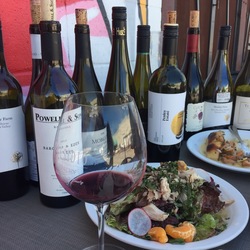Perfecting the Crispy Roast Duck
Wind Gap Wines
Sceales Vineyard Old Vine Grenache 2015
Penfolds
Bin 407 Cabernet Sauvignon 2015
Soft blue fruit, dried flowers and leather. Medium assertive tannins. Hope to try again with something like duck. — 6 years ago
Domaine Juliette Avril
Mailys Cairanne Red Rhone Blend 2016
Violet leaf and dark red fruit notes. Would be great with duck — 6 years ago

with Frank
Sequana
Santa Lucia Highlands Pinot Noir 2009
McArthur $32 for 2009 on 5/1/20 with duck and lentils. Past peak. Bitter finish gets better with air. — 6 years ago
Château de Beaucastel
Châteauneuf-du-Pape Red Rhône Blend 2009
Very typical warm vintage Rhone, slightly lower acidity than usual. Despite the half bottle, it got better as the lunch with duck went along — 6 years ago
Domaine André Mathieu
Châteauneuf-du-Pape Red Rhone Blend 2015
Incense, baking spice, wild fruit, crushed rocks, smoke and great acid to hold it all together. Duck night. — 6 years ago
Douglas liked this










Eric Turner
Opened the 2009 vintage in May 2020. Definitely showing it’s age. Deep purple with a little orange (my wife says brown) around the rim. Regardless it ages nicely.
Smell: leather, old wood (not oak just like an old barn) earth, has a bit of a mineral tinge.
Taste: dark to black fruit. Plum. Earth notes as well. Truffle. Bold and tannic. Highish acid. Dry.
Overall very classic right bank. Very good wine but too bold to drink more than a bottle. Will blow out the pallet for the next flavor. Eat something hardy. Steak or game. Duck might be nice. Save it for the last bottle of the night or the only bottle.
Save it for your friends don’t waste it on the in-laws. — 6 years ago